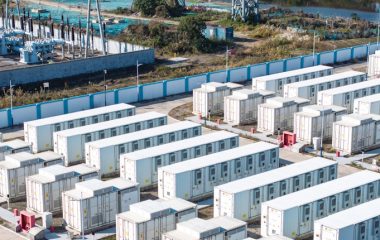
Photo: Podveležje wind farm (EPBiH)
A utility-scale photovoltaic system is planned to be built near Mostar, Bosnia and Herzegovina, in the same area as the existing Podveležje wind power plant. EPBiH is developing the project with Germany’s KfW Development Bank.
Germany’s KfW Development Bank said it intends to provide financing for the planned 36 MW photovoltaic power plant Podveležje near Mostar in the south of Bosnia and Herzegovina. The facility will provide an estimated 8 MW for the regional distribution network and an estimated 28 MW (or up to 30 MW) for the national transmission grid, it added.
The photovoltaic unit will be located in the immediate vicinity of the recently commissioned 48 MW wind farm Podveležje, located at an altitude of 700 to 800 meters. Both projects are run by state-owned Elektroprivreda Bosne i Hercegovine (EPBiH). The utility earlier revealed plans for a solar park at the Podveležje plateau with a capacity of 30 MW.
KfW to choose consulting firm
KfW issued a public call for consulting services for a review of existing studies and surveys. The bank said the selected firm would be tasked with preparing a technical feasibility study including a review of the preliminary design of the plant, and conducting a cost-benefit analysis.
The photovoltaic plant should provide 8 MW for the regional distribution network and an estimated 28 MW for the national transmission grid
The consultant needs to supplement the environmental and social impact assessment (ESIA) study in accordance with KfW’s guidelines. It will also be responsible for the communication and visibility activities, the documentation reads.
KfW provided an EUR 65 million loan for the construction of wind farm Podveležje, which cost more than EUR 74 million. It also participated with a EUR 400,000 grant. It was EPBiH’s first power plant in almost four decades and the third wind power plant in the country.
EPBiH to use infrastructure built for Podveležje wind farm
The cost of building the solar power plant was initially estimated at EUR 15 million to EUR 25 million. A lot of it clings on the availability of access roads and other infrastructure developed for the wind farm. It is one of the first utility-scale photovoltaic projects in the country and none have come online yet.
Wind and solar power complement one another. Generally, wind is stronger in the winter than in the summer, when there is more sun for photovoltaic panels. There is more wind at night, when solar panels are idle.
Integrated management of a power plant with two or more sources enables the operator to provide a steadier supply to its clients. Such facilities, called hybrid power plants, bring savings in grid and storage costs.


















Be the first one to comment on this article.